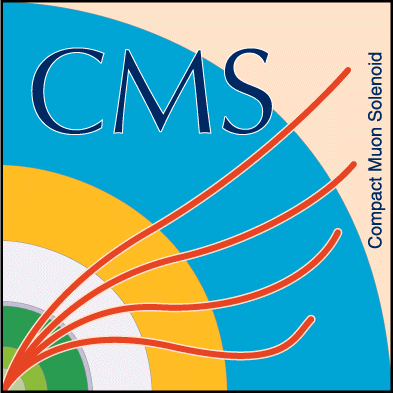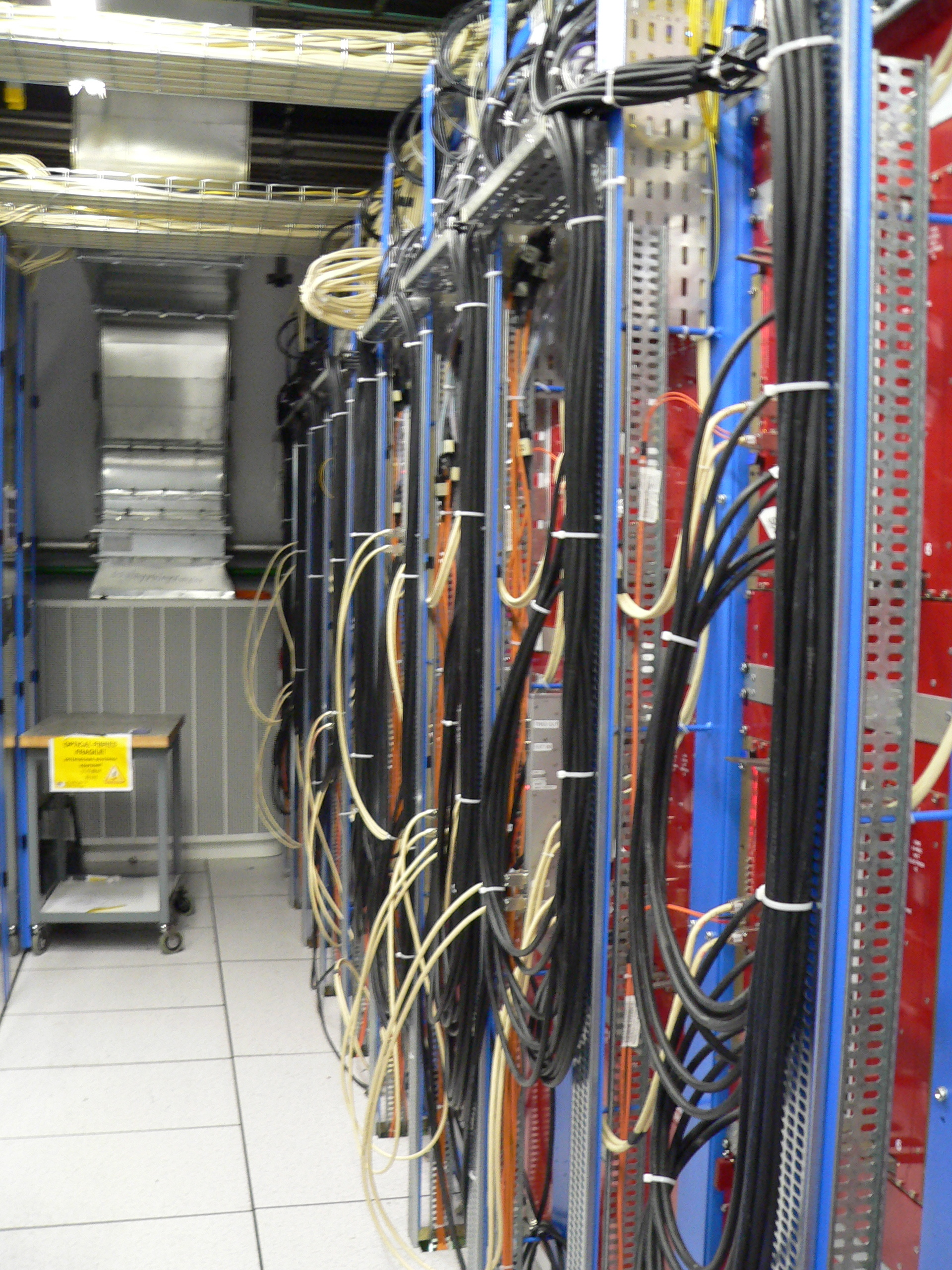 University of Wisconsin CMS Trigger Group
University of Wisconsin CMS Trigger Group

CMS Level 1 Regional Calorimeter Trigger (RCT)

The RCT is divided into 18 crates, covering the entire calorimeter eta-phi space (2 crates in eta x 9 crates in phi). Each crate's processing is handled by 7 receiver cards, 7 electron identification cards, and 1 jet/summary card. A crate is divided up into 14 "regions" (7 in eta x 2 in phi), which consist of 4x4 squares of trigger towers; for every ECAL tower there is an HCAL tower covering the same bit of eta-phi space. A compressed (non-linear) energy and a fine grain bit are received from each HCAL or ECAL trigger tower by a receiver card. The energies for each region are uncompressed (by the lookup tables on the receiver card) and processed to create two sets of information: the total energy sum for each region (done on the receiver card), and a pair of the highest-energy "electron candidates", one isolated and one non-isolated (done on the electron identification card). At this stage, each "candidate" consists of a trigger tower with an energy higher than that of its neighbors. Electron identification and isolation also depend on the fine grain bit received from the ECAL trigger tower. The region sums and electron candidates are passed on to the crate's jet/summary card, which sorts the electron candidates to find the 4 highest-energy isolated and the 4 highest-energy non-isolated candidates; the jet/summary card then passes the 8 sorted candidates along with the region sums to the Global Calorimeter Trigger. The RCT also receives energies from the HF trigger towers (8 per crate), but beyond energy lookup, does no further processing before passing them to the GCT.
Hardware Projects:
Hardware Documents:
-
Updated Interface Specification for the CMS Calorimeter Level 1 Regional Trigger to Calorimeter Global Trigger, CMS internal note CMS IN-2004/009 [pdf] or [ps.Z]
-
Revised CMS Calorimeter Trigger Primitive Generator to Level 1 Regional Trigger Interface, CMS internal note CMS IN-2004/008 [pdf] or [ps.Z]
-
Full Crate and Production Testing of the CMS Regional Calorimeter Trigger System, CMS conference report CMS CR-2003/046 [pdf] or [ps.Z]
-
Level-1 Regional Calorimeter Trigger System for CMS, CMS conference report CMS CR-2003/006 [pdf] or [ps.Z]
-
CMS Calorimeter Level 1 Regional Trigger to Calorimeter Global Trigger Interface, CMS internal note CMS IN-2001/017 [pdf] or [ps.Z]
-
CMS Calorimeter Trigger Primitive Generator to Level 1 Regional Trigger
Interface, CMS internal note CMS IN-2001/016 [pdf] or [ps.Z]
-
CMS Calorimeter Level 1 Regional Trigger Electron Identification,
CMS Note 1999/026 [pdf]
or [ps.Z]
-
CMS Calorimeter Level 1 Regional Trigger Conceptual Design,
CMS Note 1998/074 [pdf]
or [ps.Z]
-
CMS Calorimeter Level 1 Regional Trigger
Electron Identification
-
Receiver Card Prototype (photograph)
-
A Proposal for Update of CMS Level-1 Calorimeter Regional Trigger Implementation,
CMS Internal Technical Note 97-011 [pdf]
or [.ps.Z]
-
The CMS Calorimeter Level 1 Regional Trigger Test Stand, internal
reference note [pdf] or [ps]
Simulation Documents:
-
Updated Regional Calorimeter Trigger Baseline Thresholds And Rates For A LHC Luminosity Of 2x10^33 cm-2 s-1 CMS IN-2002/019
[pdf]
or [ps.Z]
-
Regional Calorimeter Trigger Baseline Thresholds and Rates for a LHC Luminosity of 2x10^33 cm-2 s-1, CMS IN-2001/042
[pdf]
or [ps.Z]
-
CMS Level-1 Regional Calorimeter Trigger Simulation Results, CMS Note
2000/074 [pdf]
or [ps.Z]
-
A Study of a First and Second Level Tau Trigger, CMS Note
2000/055 [pdf]
or [ps.Z]
-
CMS Level-1 Calorimeter Trigger Detailed Simulation, CMS Note 1998/027
[pdf] or
[ps.Z]
-
Consequences of Scope Changes to the Calorimeter Regional Trigger,
CMS Internal Note 1998/022 [pdf],
[ps.Z]
-
CMS Level-1 Jet Trigger Study , CMS Technical Note 1996/066 [pdf]
or [ps.Z]
-
Preliminary specification of the baseline calorimeter trigger algorithms,
CMS Technical Note 1996/010 [pdf]
or [ps.Z]
-
CMS Level 1 Calorimeter Trigger Performance on Technical Proposal Physics,
CMS Technical Note 1995/183 [.pdf]
or [.ps.Z]
-
CMS Missing Transverse Energy Trigger Studies, CMS Technical Note
1995/111 [pdf] or
[ps.Z]
-
CMS Level 1 Calorimeter Trigger Performance Studies, CMS Technical
Note 1994/285 [pdf]
or [ps.Z]
CMS and Trigger Links:
Also see the CMS
Trigger / Data Acquisition (TriDAS) page
 University of Wisconsin CMS Trigger Group
University of Wisconsin CMS Trigger Group


 University of Wisconsin CMS Trigger Group
University of Wisconsin CMS Trigger Group

